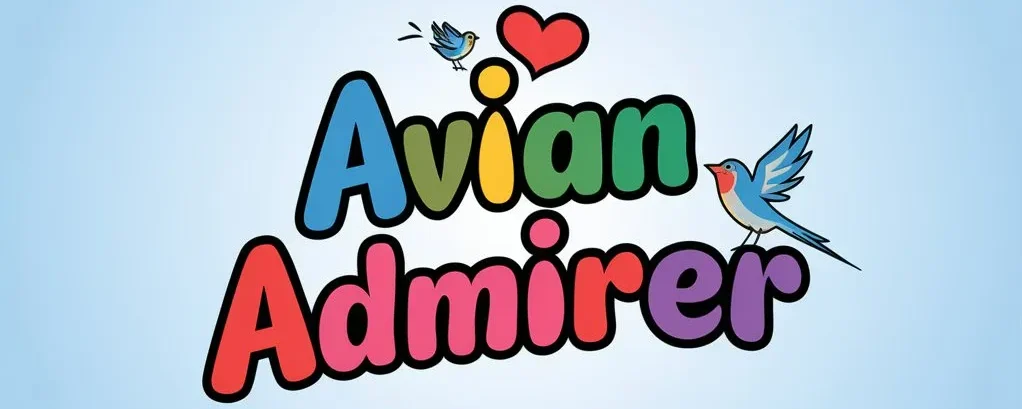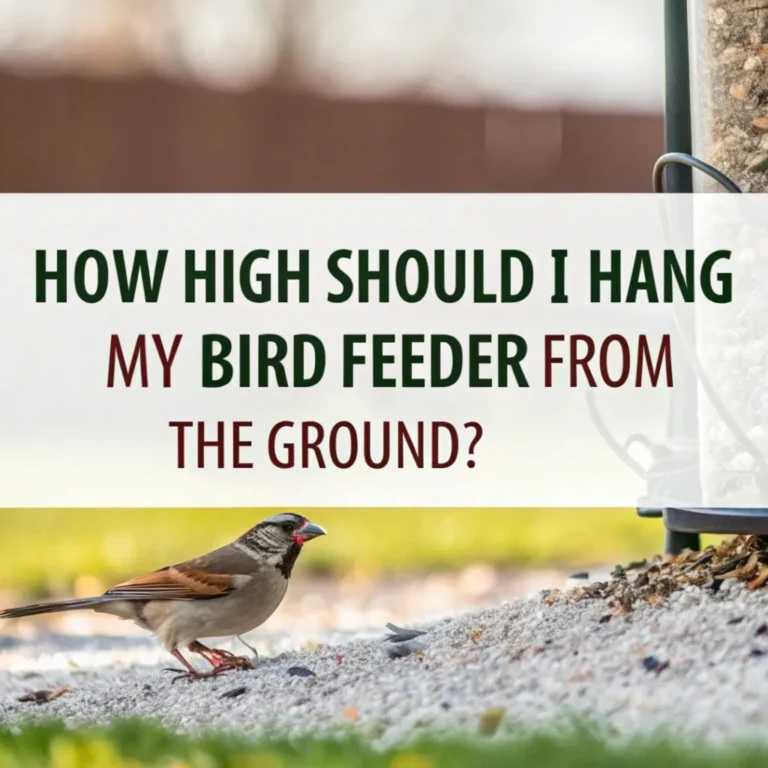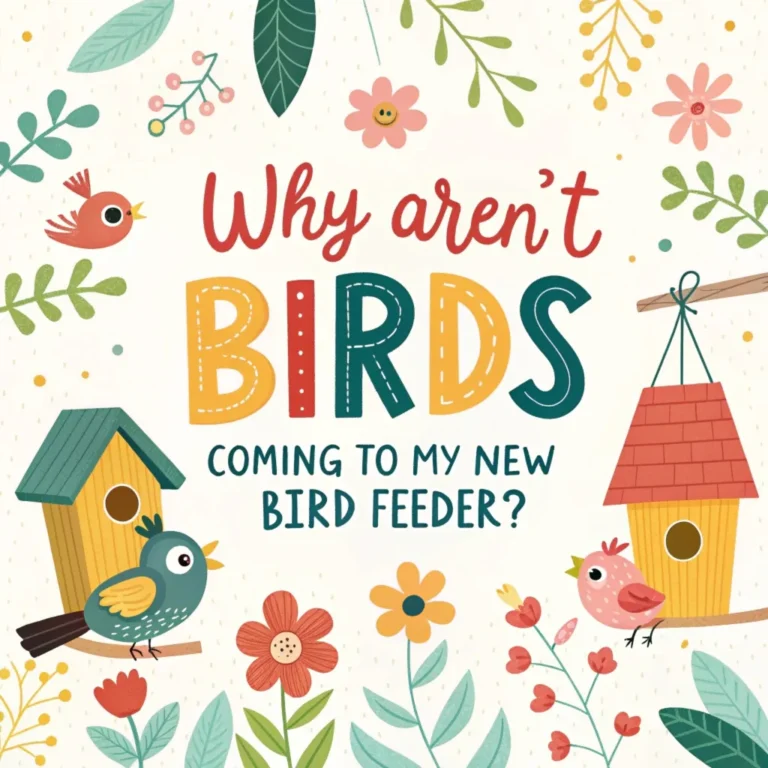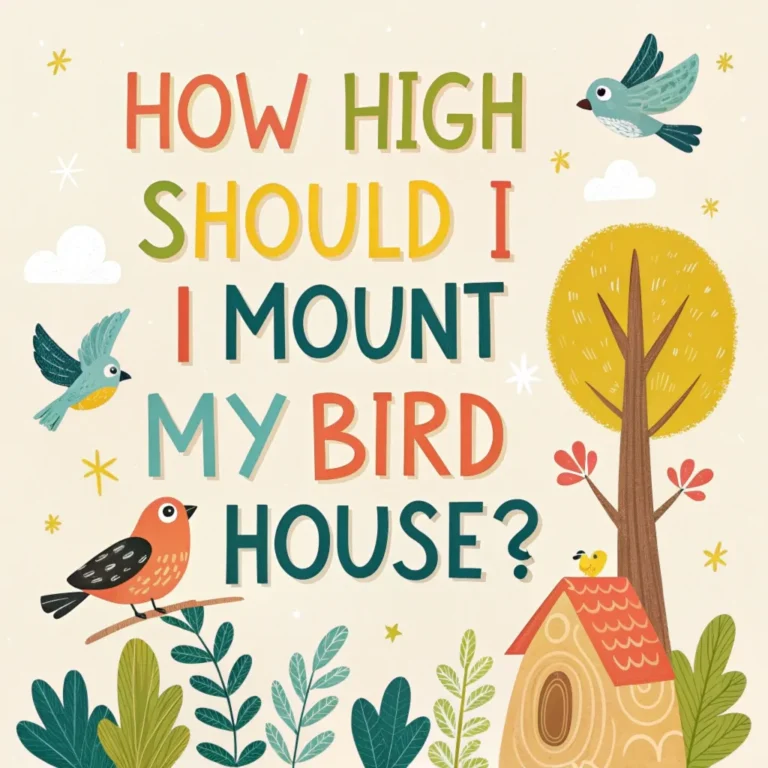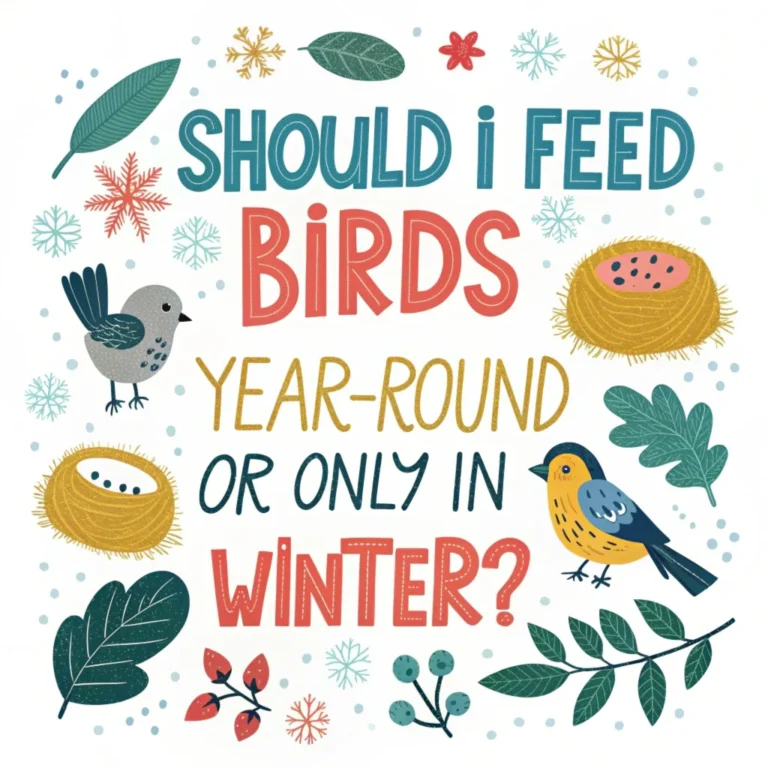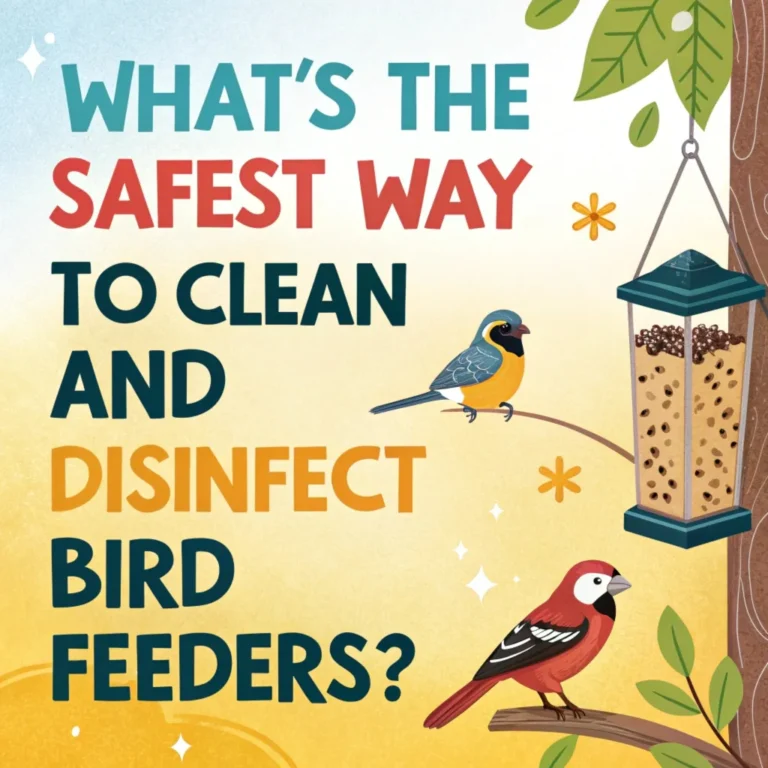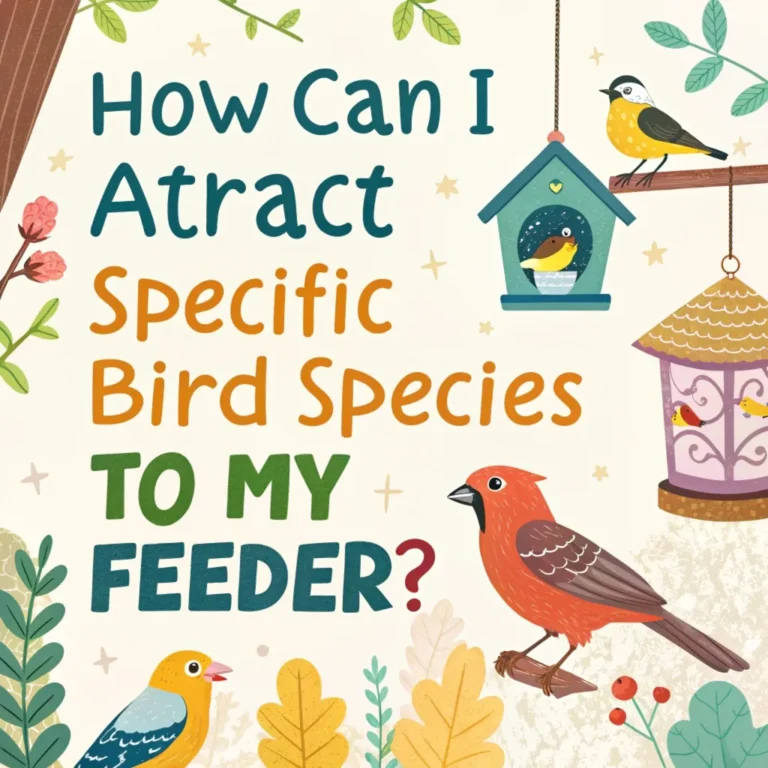How Often to Clean Your Bird Feeder for Healthy Birds?
Bird feeders bring joy to our yards, attracting feathered friends with tasty treats. However, these feeding stations can become breeding grounds for harmful bacteria and diseases if not maintained properly.
This comprehensive guide will explore the crucial task of cleaning bird feeders, ensuring the health and safety of our avian visitors.
Keeping Bird Feeders Clean and Safe
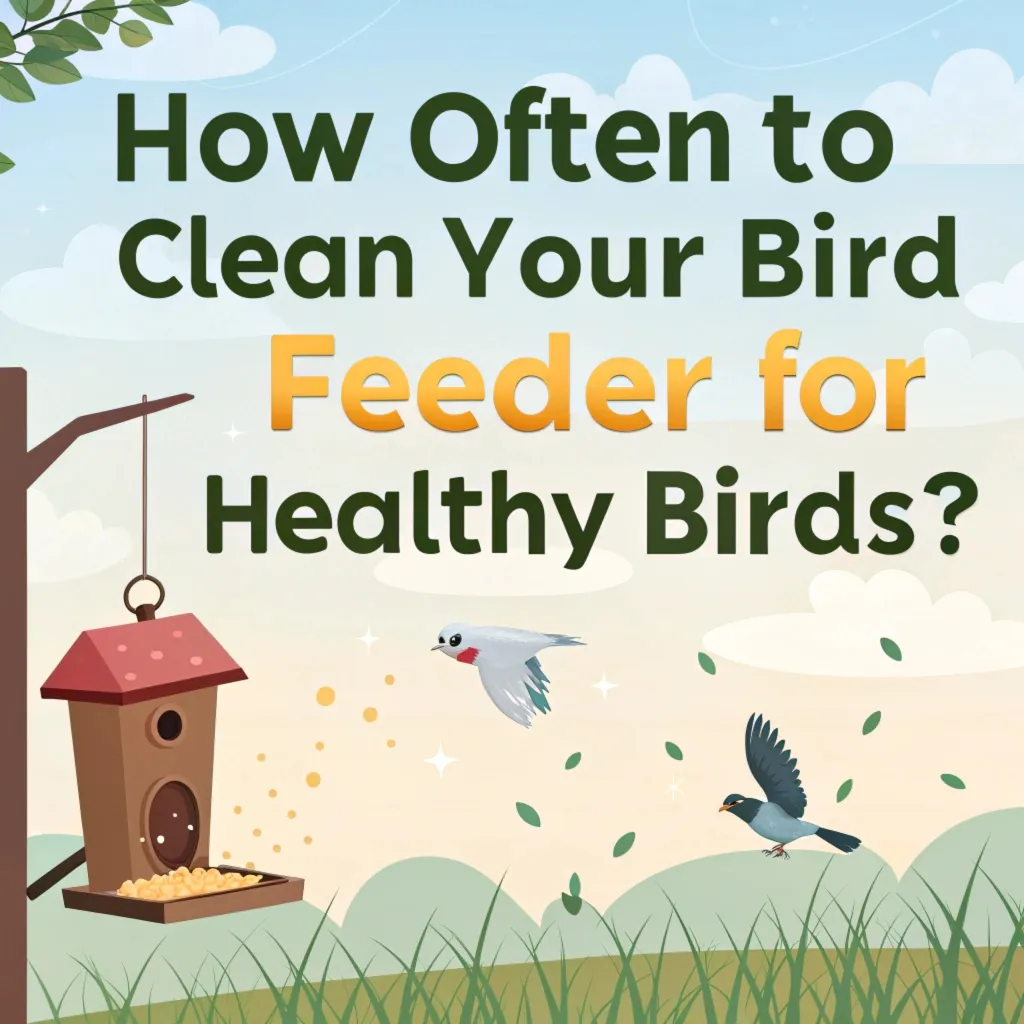
- Clean seed feeders every two weeks to prevent disease spread
- Increase cleaning frequency to weekly during wet weather or if sick birds are spotted
- Use a solution of 9 parts water to 1 part bleach for effective disinfection
- Scrub feeders thoroughly to remove debris and old food
- Rinse feeders well and allow them to dry completely before refilling
- Clean the area under feeders regularly to prevent waste buildup
- Change hummingbird nectar every 3-5 days, more often in hot weather
- Move feeders periodically to prevent droppings accumulation
- Wear gloves when cleaning feeders and wash hands afterward
- Monitor seed quality and replace if moldy or wet
- Clean birdbaths weekly using the same bleach solution
The Importance of Clean Bird Feeders
Maintaining clean bird feeders is crucial for the health and well-being of our feathered visitors. Dirty feeders can become breeding grounds for harmful bacteria and diseases, posing significant risks to birds.
Salmonellosis, a bacterial disease, is particularly dangerous and can spread rapidly among bird populations.
Regular maintenance of bird feeders is not just a matter of aesthetics; it’s a vital practice for bird conservation.
By keeping feeders clean, we create a safe environment for birds to feed and socialize, promoting healthy populations in our local ecosystems.
This simple act of care can have far-reaching effects on the biodiversity of our neighborhoods and beyond.
Recommended Cleaning Frequency
Experts suggest cleaning bird feeders every two weeks as a general rule. This frequency helps prevent the buildup of harmful bacteria and mold. However, certain situations may require more frequent cleaning:
- During wet weather conditions
- When sick birds are observed at the feeder
- In areas with reported salmonella outbreaks
- During periods of heavy feeder use
In these cases, it’s advisable to clean feeders weekly to minimize health risks.
The frequency of cleaning can significantly impact the health of visiting birds. By adhering to a regular cleaning schedule, we create a safer feeding environment and reduce the risk of disease transmission.
This proactive approach not only protects birds but also enhances our birdwatching experience by ensuring a diverse and thriving avian community in our yards.
Effective Cleaning Methods
To properly clean your bird feeders, follow these steps:
- Empty the feeder of all seeds and debris.
- Disassemble the feeder if possible.
- Soak the feeder in a solution of 9 parts water to 1 part bleach for 10 minutes.
- Scrub the feeder thoroughly with a brush to remove all debris.
- Rinse the feeder well with clean water.
- Allow the feeder to air dry completely before refilling.
Proper cleaning techniques are essential for maintaining hygienic bird feeders. The use of a bleach solution is particularly effective in killing harmful pathogens that can accumulate on feeder surfaces.
By following these steps diligently, we ensure that our feeders remain safe and inviting for our feathered friends, promoting their health and well-being.
Cleaning Different Types of Feeders
Seed Feeders
Seed feeders should be cleaned every two weeks, or more frequently during wet weather or heavy use. Use the bleach solution method described above for effective cleaning.
Hummingbird Feeders
Hummingbird feeders require more frequent attention:
- Change nectar every 3-5 days, more often in hot weather.
- Clean weekly with hot water and a bottle brush.
- Avoid using soap or detergent on hummingbird feeders.
Different types of feeders require specific cleaning approaches to ensure optimal hygiene. Seed feeders and hummingbird feeders have unique characteristics that influence their cleaning needs.
By tailoring our cleaning methods to each feeder type, we can provide the best possible care for our avian visitors and maintain a healthy feeding environment for all species.
Maintaining the Feeding Area
Cleaning doesn’t stop at the feeder itself. The area around your feeders also needs attention:
- Rake or shovel up fallen seeds and hulls regularly.
- Move feeders periodically to prevent droppings accumulation.
- Clean birdbaths weekly using the same bleach solution as for feeders.
The area surrounding bird feeders plays a crucial role in maintaining a healthy feeding environment. Neglecting this space can lead to the accumulation of waste and droppings, which can attract pests and harbor diseases.
By regularly cleaning and maintaining the feeding area, we create a safer and more inviting space for birds to visit and feed.
Signs of Sick Birds
Be vigilant for signs of sick birds at your feeders:
- Lethargy or reluctance to fly
- Swollen eyes or face
- Difficulty breathing
- Crusty beaks or nostrils
If you observe these symptoms, increase cleaning frequency and consider temporarily removing feeders to prevent disease spread.
Recognizing signs of illness in birds is crucial for maintaining a healthy bird population in your yard. By being attentive and proactive, we can quickly identify and address potential health issues.
This vigilance allows us to take timely action, such as increasing cleaning frequency or temporarily removing feeders, to prevent the spread of diseases and protect the overall well-being of our avian visitors.
The Impact of Seasons on Cleaning Frequency
Seasonal changes can affect how often you need to clean your feeders:
- Spring and Fall: Clean more frequently during migration periods when feeder use increases.
- Summer: Hot, humid weather can cause seed to spoil faster, requiring more frequent cleaning.
- Winter: Cold temperatures may slow bacterial growth, but regular cleaning is still important.
The changing seasons bring unique challenges to bird feeder maintenance. Each season presents different conditions that can affect the cleanliness and safety of feeders.
By adapting our cleaning routines to these seasonal variations, we ensure that our feeders remain hygienic and welcoming throughout the year, providing a reliable food source for birds in all weather conditions.
Tools for Effective Feeder Cleaning
Having the right tools makes cleaning easier:
- Large bucket for soaking
- Scrub brush or old toothbrush
- Bottle brush for tubular feeders
- Gloves for protection
- Bleach for disinfecting
Proper cleaning tools are essential for maintaining hygienic bird feeders. Each tool serves a specific purpose in the cleaning process, from scrubbing away debris to disinfecting surfaces.
By using the right tools, we can ensure a thorough and effective cleaning, making the task easier and more efficient while providing the best care for our feathered friends.
Preventing Mold and Bacteria Growth
To minimize the risk of mold and bacteria:
- Keep feeders dry by using weather guards or placing them in sheltered areas.
- Fill feeders with only a few days’ worth of seed at a time.
- Check seed quality regularly and replace if wet or moldy.
Proactive measures against mold and bacteria are crucial for maintaining healthy bird feeders. By implementing these preventive strategies, we create an environment that is less conducive to harmful growth.
This approach not only reduces the frequency of deep cleaning required but also ensures that the food we provide remains fresh and safe for our avian visitors.
The Role of Feeder Design in Cleanliness
Some feeder designs are easier to clean than others:
- Platform feeders with removable trays are simple to clean but may need more frequent attention.
- Tube feeders can be more challenging to clean but may stay cleaner longer.
- Hopper feeders with wide openings are easier to access for cleaning.
Consider ease of cleaning when choosing new feeders for your yard.
The design of bird feeders plays a significant role in their maintenance and cleanliness. Different feeder types offer varying levels of accessibility and resistance to contamination.
By understanding these design features, we can make informed choices when selecting feeders, balancing factors such as ease of cleaning, durability, and bird preferences to create an optimal feeding station.
Educating Others About Feeder Hygiene
Spread awareness about the importance of clean feeders:
- Share information with neighbors who feed birds.
- Participate in local birding groups to exchange cleaning tips.
- Encourage responsible bird feeding practices in your community.
Educating others about proper feeder hygiene is a vital aspect of bird conservation. By sharing our knowledge and experiences, we can create a community of informed bird enthusiasts who prioritize the health and well-being of our feathered friends.
This collective effort can lead to healthier bird populations and a more vibrant ecosystem in our neighborhoods.
The Benefits of Clean Feeders
Maintaining clean feeders not only protects bird health but also enhances your birdwatching experience:
- Healthier birds are more active and vibrant.
- Clean feeders attract a greater variety of species.
- Regular cleaning allows you to monitor feeder condition and make repairs as needed.
The benefits of clean feeders extend beyond just bird health. A well-maintained feeding station creates a thriving hub of avian activity, offering birdwatchers a more rewarding and diverse experience.
By investing time in feeder cleanliness, we not only support bird populations but also enrich our own connection with nature, fostering a deeper appreciation for the wildlife in our backyards.
Conclusion: A Commitment to Bird Health
Cleaning bird feeders is a crucial aspect of responsible bird feeding. By maintaining a regular cleaning schedule and following proper disinfection techniques, we can provide a safe and healthy environment for our feathered friends.
Remember, the effort you put into keeping your feeders clean directly contributes to the well-being of the birds that bring so much joy to our lives.
FAQs
How do I know if my bird feeder needs cleaning?
Look for signs of mold, stuck-on debris, or wet seed. If you notice any of these, it’s time to clean your feeder.
Can I use soap instead of bleach to clean my bird feeders?
While soap can help remove debris, a bleach solution is more effective at killing harmful bacteria and pathogens.
Is it safe to clean bird feeders in my kitchen sink?
It’s best to clean feeders outside to avoid contaminating food preparation areas. If you must use a sink, thoroughly disinfect it afterward.
How can I prevent squirrels from contaminating my bird feeders?
Use squirrel-proof feeders or baffles to keep squirrels away. Regular cleaning is still important, as birds can also spread diseases.
Should I wear gloves when cleaning bird feeders?
Yes, wearing gloves is recommended to protect yourself from potential pathogens. Always wash your hands thoroughly after cleaning feeders, even if you wore gloves.

Ava is a bird enthusiast and nature lover who has spent countless hours observing and learning about the fascinating world of birds. With a passion for sharing her knowledge and inspiring others to appreciate the beauty of birds, Ava writes about her experiences and insights on avianadmirer.com.
